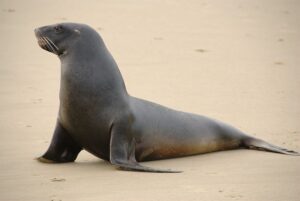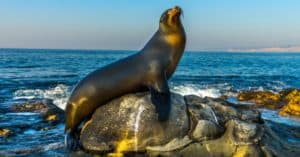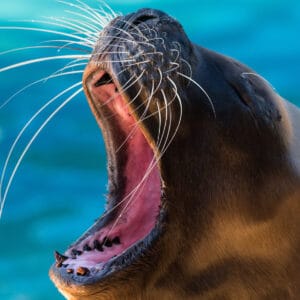Sea lions are the most fascinating creatures that you will find in the sea. They growl, bleat, roar, and bark to mark their territory and signal danger. They are called the “lions of the sea” because they have manes and roar loudly like their land-dwelling namesakes.
Sea lions are pinnipeds characterized by long fore flippers, external ear flaps, a big chest and belly, short and thick hair, and the ability to work on their fours. They are closely related to walruses and seals. Along with the fur seals, sea lions make up the family Otariidae, which means eared seals.
Sea lions can be found on the Galapagos Islands, the coasts of Japan and Korea, and western North America, from southern Canada to mid-Mexico. They are known for their distinct and adorable appearance, social behavior, cunning intelligence, agility in the water, and playful behavior. Read on and discover 10 incredible facts about these amazing pinnipeds.
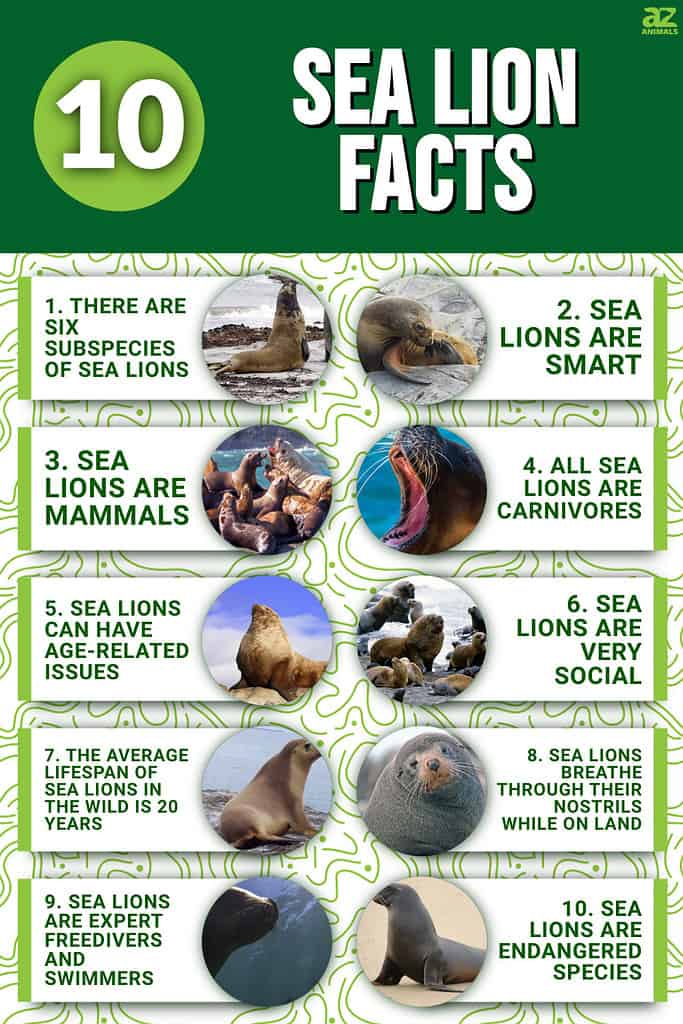
1. There are Six Subspecies of Sea Lions
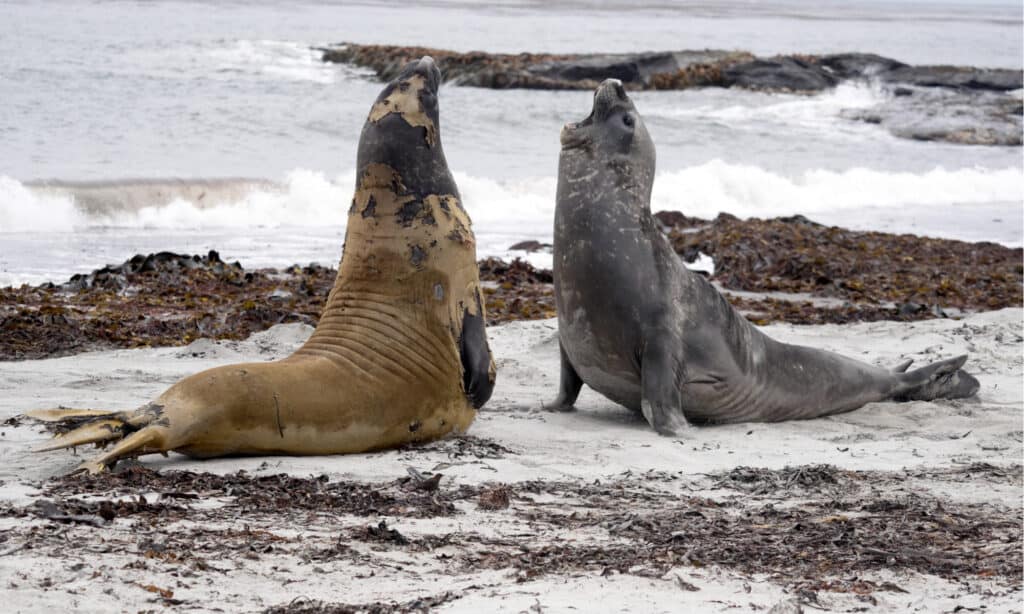
Sea lions have six extant and one extinct subspecies.
©Vladislav T. Jirousek/Shutterstock.com
Sea lions have six extant and one extinct subspecies. The extant sea lion species include Galapagos sea lions, California sea lions, Australian sea lions, Steller sea lions, South American sea lions, and New Zealand sea lions. The Japanese sea lion became extinct around the 1950s-1970s. They lived in Japan along the northwest Pacific coastline before extinction.
2. Sea Lions are Smart
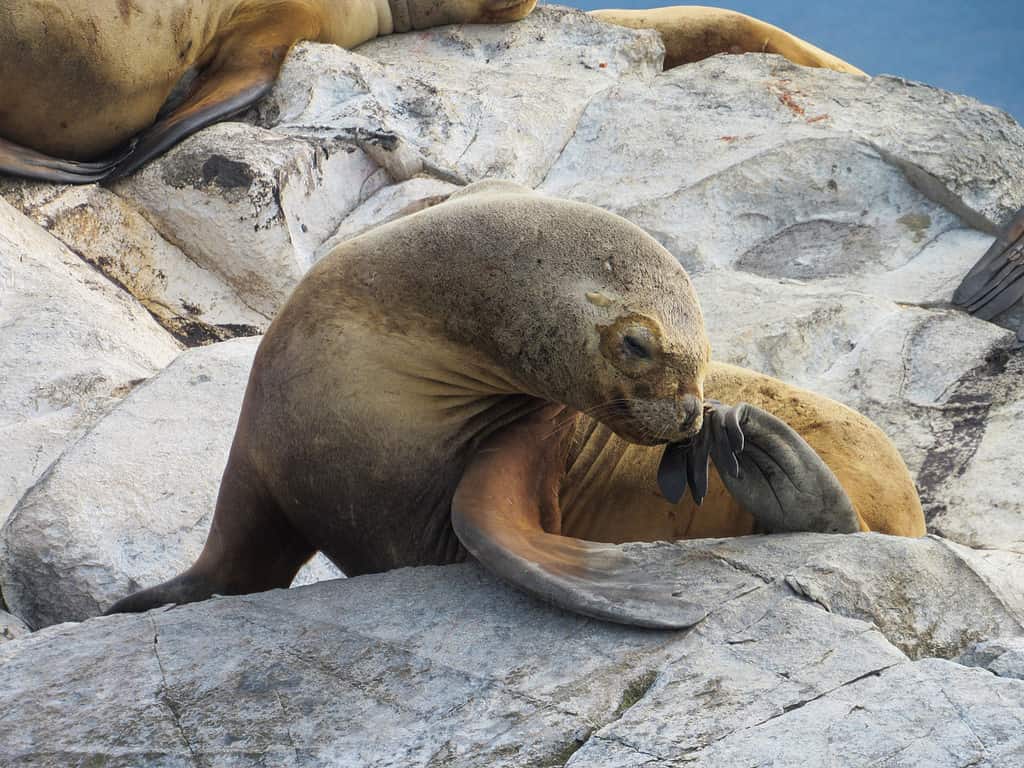
During the Vietnam War, the Navy used sea lions and dolphins to help with tasks like finding mines and objects and finding and marking enemy swimmers.
©iStock.com/Felipe Cruz
Some species of sea lions, particularly the California sea lions, can be trained to perform various tasks and display little fear of humans during their interactions. During the Vietnam War, the Navy used sea lions and dolphins to help with tasks like finding mines and objects and finding and marking enemy swimmers.
Since then, sea lions have been helping the Navy clear mines from the waters. The animals are not trained to take out the intruder or attack the person alone. They are trained to alert the human handlers and swim away while the Navy apprehends the intruder. According to the U.S. Navy, none of the sea animals have ever been injured or killed in the line of duty.
3. Sea Lions are Mammals
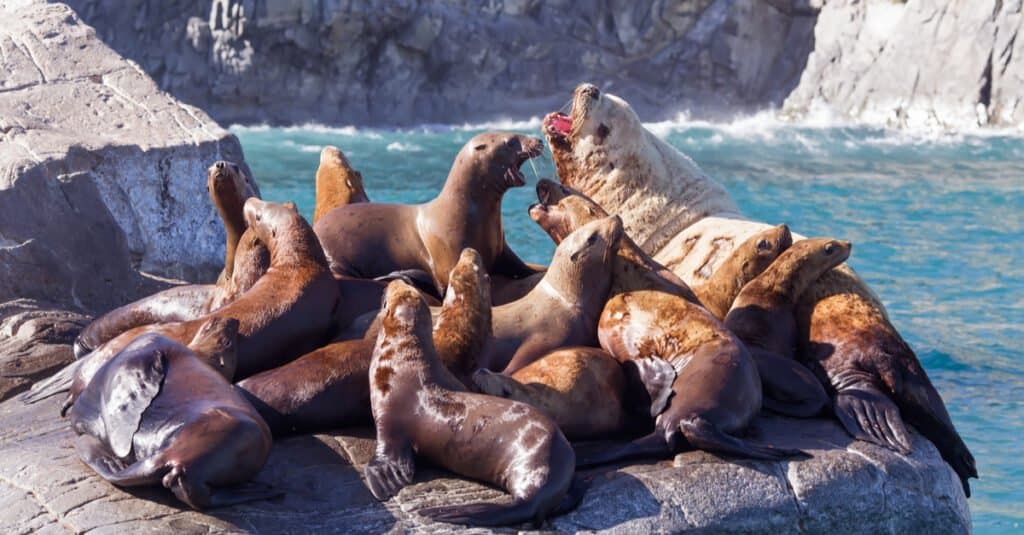
Male sea lions are called bulls, females are known as cows, and babies are referred to as pups.
©Alexander Machulskiy/Shutterstock.com
A sea lion is neither an amphibian nor a fish. Together with the seals, sea lions belong to a group of marine mammals called pinnipeds, which means flipper-footed or finned. Unlike fish, sea lions can spend time on land and water. They can jump out of the water and stay on rocky shores or sandy beaches for hours or even days without discomfort or overheating.
Male sea lions are called bulls, females are known as cows, and babies are referred to as pups. Since they are mammals, sea lions do not lay eggs but carry their pups in their tummies for eight to eleven months. Young ones are born on land, and mothers produce milk to nurse them for up to twelve months.
4. All Sea Lions are Carnivores
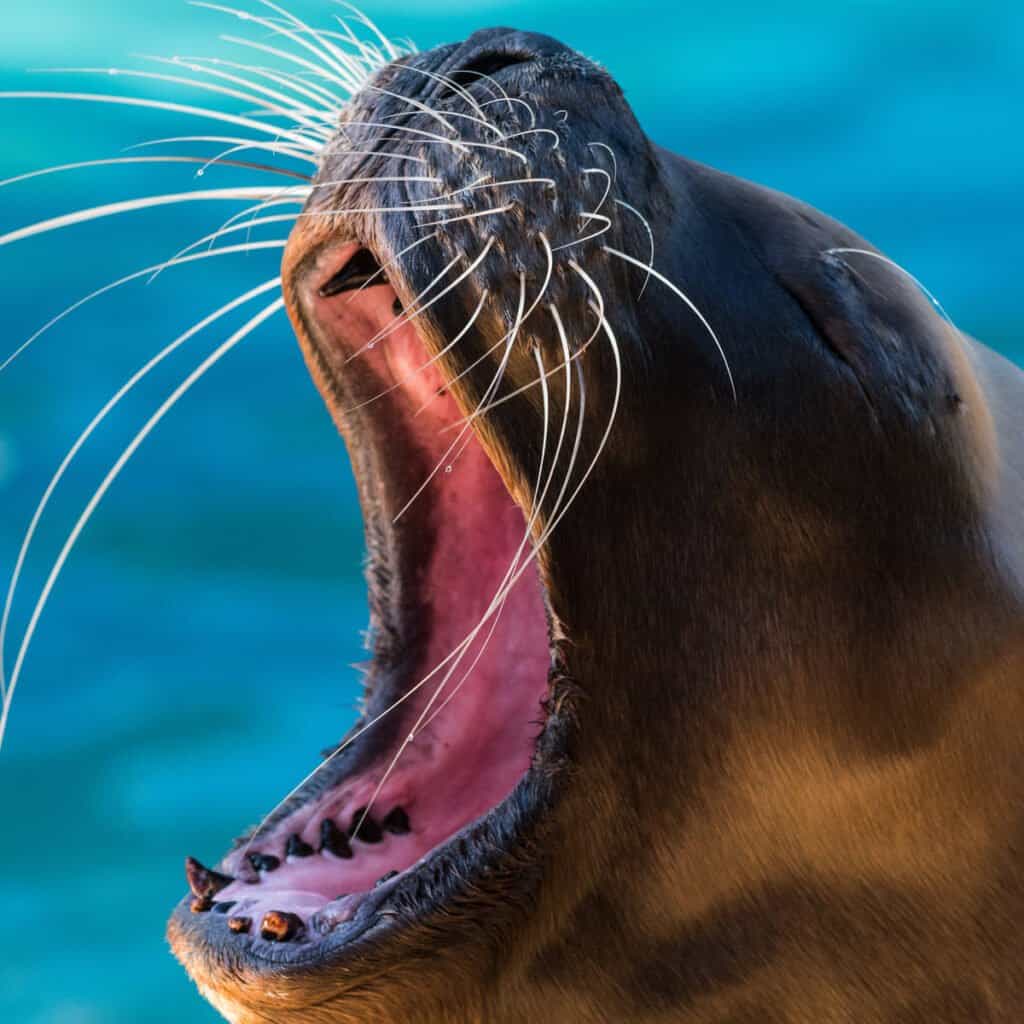
Sea lions hunt together by herding a shoal of fish into a tight circle, then start to pick off the individual fish around the edges.
©Marcos del Mazo/Shutterstock.com
Sea lions eat a variety of marine mammals, including sardines, clams, rockfish, mackerel, squid, crabs, octopus, and anchovies, among others. They are primarily carnivores. Sea lions hunt together by herding a shoal of fish into a tight circle, then start to pick off the individual fish around the edges. Some types of sea lions may hunt in large groups with dolphins, seabirds, and porpoises.
5. Sea Lions can Have Age-Related Issues
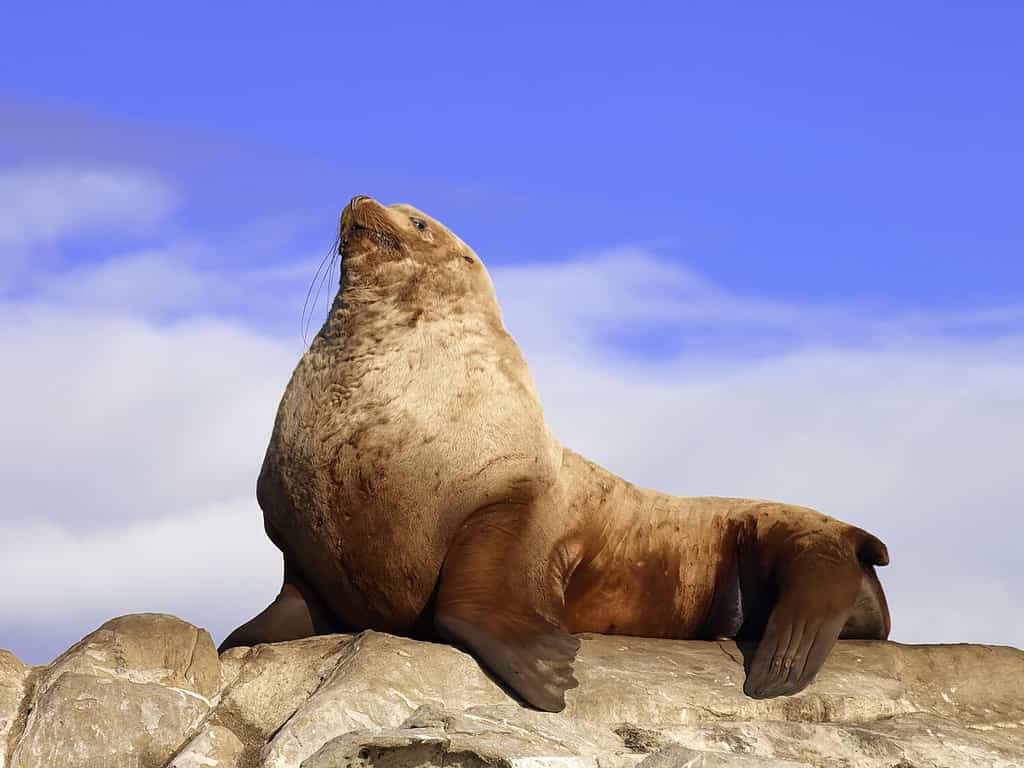
Most older sea lions die because they lack immunity to fight diseases.
©NatureDiver/Shutterstock.com
Old sea lions are vulnerable to dental issues, cancer, poor vision, skin conditions, arthritis, idiopathic seizures, and other neurologic problems. Most of them die because they lack immunity to fight the diseases.
6. Sea Lions are Very Social
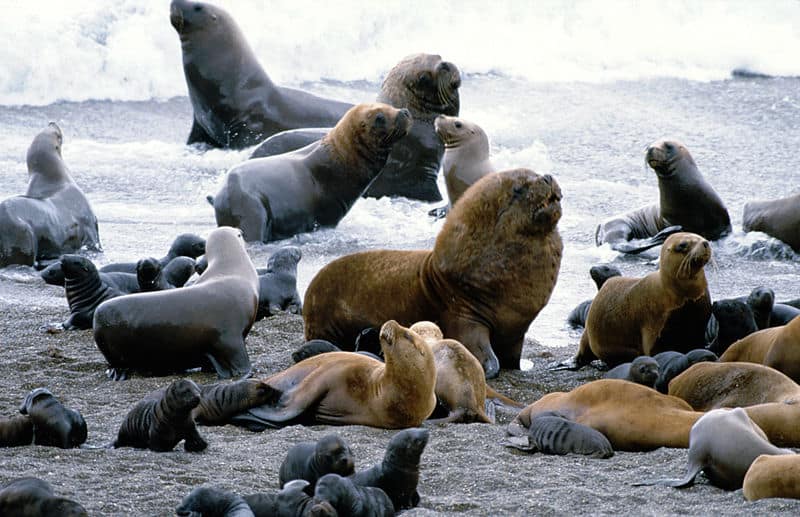
Sea lions are often sighted packed in groups on land or floating together on the ocean’s surface in groups.
©Reinhard Jahn, Mannheim / CC BY-SA 2.0 DE – License
Sea lions, especially the California sea lions, are very social animals. They are often sighted packed in groups on land or floating together on the ocean’s surface in groups called “rafts.” They prefer to live in colonies of up to a thousand members, with plenty of subgroups within their hierarchy. Their social structure works well for them but can be chaotic for an outsider looking in.
7. The Average Lifespan of Sea Lions in the Wild is 20 Years
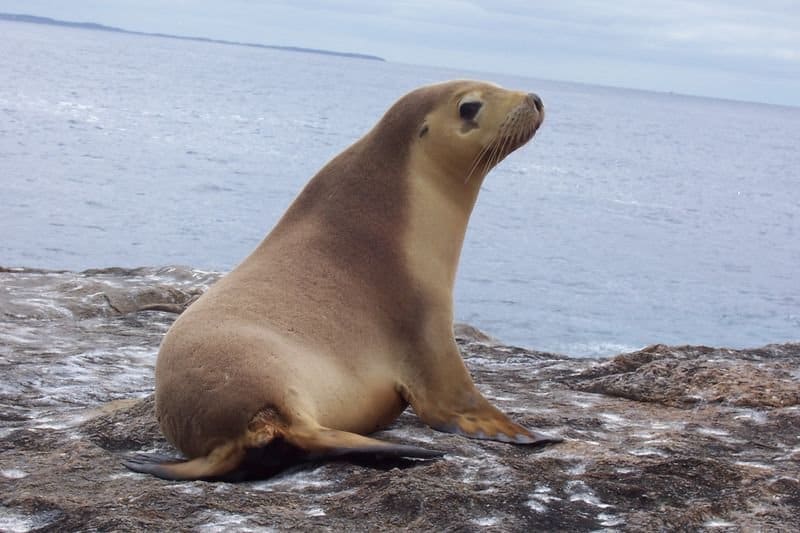
While sea lions can live up to 20 years in the wild, most of them don’t live that long.
©User Bmh ca on en.wikipedia / CC BY-SA 3.0 – License
Sea lions live up to 20 years in the wild. However, most of them do not live long due to the wear and tear of hunting and many other environmental factors. Sea lions are also vulnerable to predation by killer whales, sharks, and humans.
Their lifespan can extend to thirty years in human care, where they have ready access to food, medical care, and secure living environments free of predators. They may only suffer and die of incurable diseases.
8. Sea Lions Breathe Through Their Nostrils While on Land
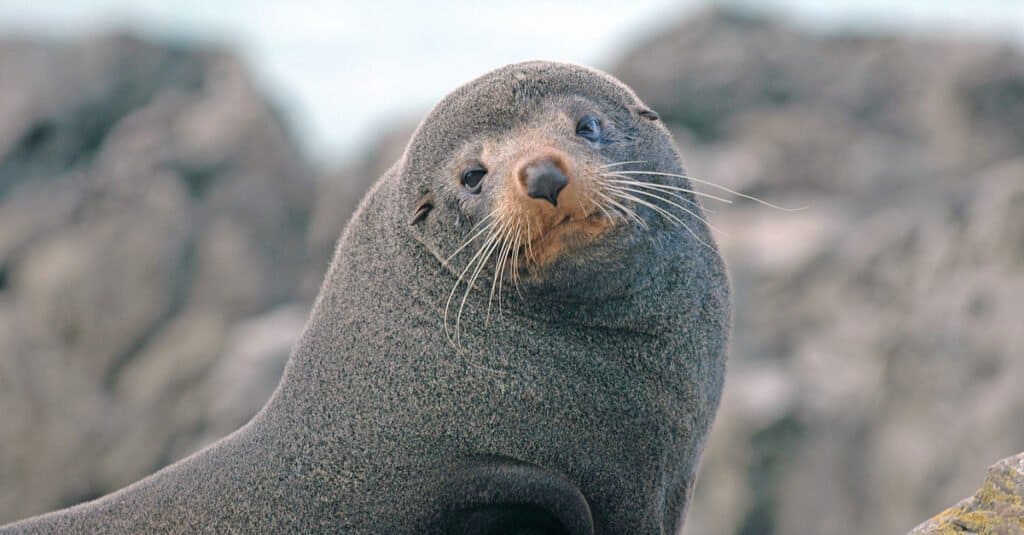
When on land, sea lions breathe through their nostrils, and as soon as they dive into the water, their nostrils instinctively shut.
©nyker/Shutterstock.com
Sea lions spend their time on land and in the sea. On land, they breathe through their nostrils. Their nostrils instinctively shut as soon as they dive into the water. Sea lions can remain in the water for an average of 8 to 20 minutes. They can not breathe underwater. Their nostrils stay closed during this time, but they have special muscles that allow them to open them when they come out of the water and need to breathe.
9. Sea Lions are Expert Freedivers and Swimmers
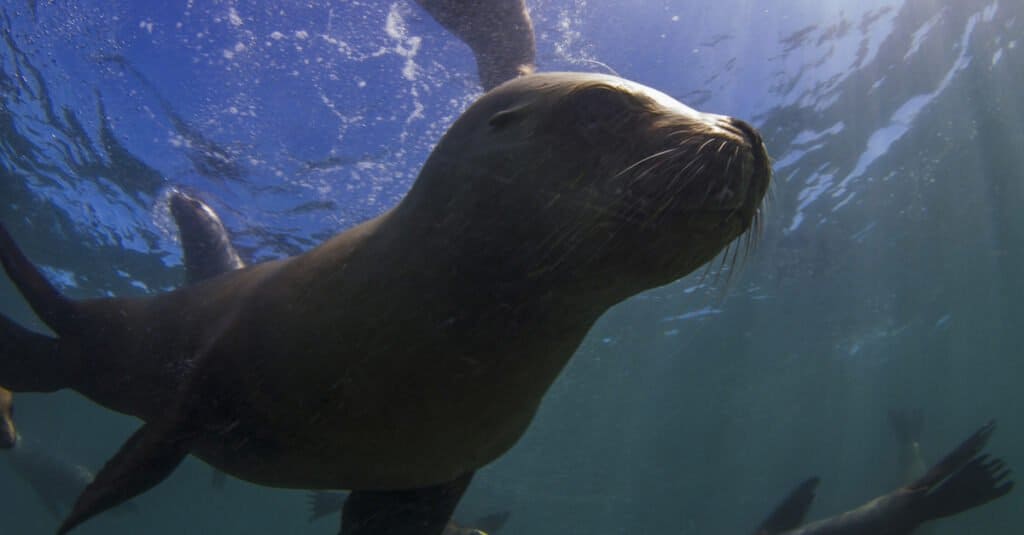
Sea lions have special physiological builds that allow them to conserve oxygen while diving.
©Foto 4440/Shutterstock.com
Sea lions can dive up to 984 feet (300 meters). They have special physiological builds that allow them to conserve oxygen while diving. They are also remarkable swimmers and can reach a speed of about 20 miles per hour in the water. They swim using their long, powerful fore flippers to generate power and their hind flippers to steer.
10. Sea Lions are Endangered Species
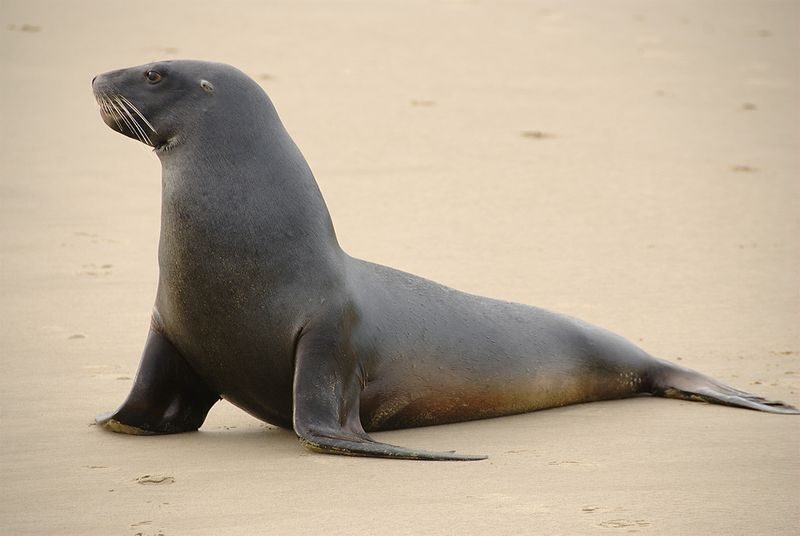
All sea lions are vulnerable to diseases, pollution, and the effects of climate change on ocean conditions.
©Karora, Public domain, via Wikimedia Commons – License
Many subspecies of sea lions, especially the Steller and New Zealand sea lions, are on the brink of extinction. All sea lions are vulnerable to diseases, pollution, and the effects of climate change on ocean conditions.
Extreme temperatures and pollution in the ocean can have an impact on the abundance of fish prey in sea lion habitats. Toxins in the fish prey can also build up in sea lions, leading to neurological conditions, behavioral changes, or even death. Besides, plastic waste in the ocean and on shores frequently entangles sea lions.
Some sea lions are also killed accidentally in net fisheries. They often swim long distances, becoming tired or severely injured when entangled in fishing gear like gillnets or traps. New Zealand sea lions and Australian sea lions are the major victims of bycatch since they are usually attracted to the bait material in rock lobster pots.
Cleaning up the environment is a huge part of the conservation efforts for sea lions. They are less likely to become ill or entangled if we keep the water and surroundings clean. Several international laws have been implemented to help protect the sea lion from extinction.
The photo featured at the top of this post is © Alexander Machulskiy/Shutterstock.com
Thank you for reading! Have some feedback for us? Contact the AZ Animals editorial team.



